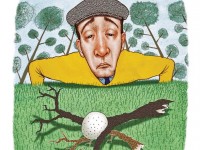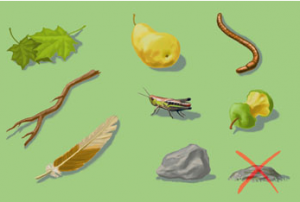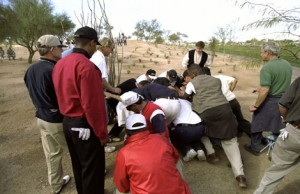This week’s Club Golf Academy artcile will take a closer look at Rule 23-1 concerning relief from loose impediments. Before we can talk about relief from loose impediments, we must define what is a loose impediment and what is not. Loose impediments are objects that have become detached from their original position and are thus out of play.
The USGA defines a loose impediment as a natural object - including stones, grass shavings, leaves, twigs, branches, pinecones, pine straw, dung, worms, and insects; provided that they are not fixed or growing, solidly embedded, or adhering to the ball. Sand and loose soil are loose impediments on the putting green, but not elsewhere. Snow and natural ice, other than frost, are either casual water or loose impediments, at the option of the player. Dew and frost are not considered loose impediments.
Now that Club Golf Academy has been defined what a loose impediment is, let’s get to the how and when it is appropriate to take relief from loose impediments. Except for when both the ball lied in or touches the same hazard, any loose impediment may be removed without penalty. If the ball lies anywhere other than on the putting green and the removal of a loose impediment by the player causes the ball to move, Rule 18-2a is in effect. It requires that you replace the ball in its original location and incur a one-stroke penalty.
Have a Rules Question? Ask Nick.
On the putting green, if the ball or ball-marker is accidentally moved in the process of the player removing a loose impediment, the ball or ball-marker must be replaced. In this scenario there is no penalty, provided the movement of the ball or ball-marker is directly attributable to the removal of the loose impediment. Otherwise, if the player causes the ball to move then he incurs a penalty of one stroke under Rule 18-2a and must replace the ball. When a ball is in motion, a loose impediment that might influence the movement of the ball must not be removed.
So, how does this help you? Removing loose impediments is one of the few times where the Rules permit you to alter the area of your intended stance/swing, lie, or line of play without penalty. If you asked Tiger Woods to define "Loose Impediment" during the 1999 Phoenix Open, his interpretation may be a little bit more liberal than how Club Golf Academy pictures the rule.
Note: If the ball lies in a hazard, including bunkers, the player must not touch or move any loose impediment lying in or touching the same hazard - see Rule 13-4.
Check out this USGA video about loose impediments.
**Written by Nicholas Heyrman, National Collegiate Club Golf Association Director of Tournament Operations.






